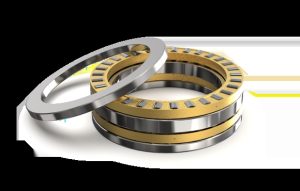Bearings play a crucial role in mechanical devices, facilitating smooth motion and reducing friction between moving parts. Understanding the distinctions between sealed and shielded bearings is essential for making informed decisions regarding their application and maintenance.
Sealed Bearings
Definition and Characteristics: Sealed bearings come with seals on both sides, made from rubber or other flexible materials. These seals are firmly in contact with the bearing's inner ring, providing a barrier against external contaminants like dust, dirt, and moisture.
Performance and Specifications: Sealed bearings typically offer higher protection against contaminants compared to shielded bearings. They are ideal for environments where exposure to dirt and moisture is a concern. However, the contact seals generate more friction, which can affect speed and efficiency.
Applications and Advantages: Common applications include high-precision instruments and machinery used in dirty or wet conditions. The main advantage is their ability to maintain lubrication for extended periods and prevent contaminants from entering, thus enhancing the bearing's lifespan.
Cost and Maintenance: Sealed bearings may have a higher initial cost due to their complex design. Maintenance is minimal since they do not require frequent re-lubrication.
Shielded Bearings
Definition and Characteristics: Shielded bearings have metal shields that do not make contact with the inner ring. These shields are typically made of steel or aluminum and provide a gap that helps to block larger particles while allowing for some airflow.
Performance and Specifications: Shielded bearings are suitable for applications where high speeds are essential. They offer less friction compared to sealed bearings, making them more efficient for high-speed operations. However, they provide less protection against fine contaminants.
Applications and Advantages: They are commonly used in electric motors, automotive applications, and high-speed machinery. Their primary advantage is the reduction in friction, which enhances speed and efficiency.
Cost and Maintenance: Shielded bearings are generally less expensive than sealed bearings. They may require more frequent maintenance, such as cleaning and re-lubrication, depending on the operating environment.
Comparative Analysis
| Feature | Sealed Bearings | Shielded Bearings |
|---|---|---|
| Protection | High (against dust, dirt, moisture) | Moderate (against larger particles) |
| Friction | Higher due to contact seals | Lower due to non-contact shields |
| Speed | Lower operational speed | Suitable for high-speed applications |
| Maintenance | Low (minimal re-lubrication) | Higher (regular cleaning and lubrication) |
| Cost | Generally higher | Generally lower |
| Lifespan | Longer due to better sealing | Shorter if exposed to fine contaminants |
For more details on specific products and their specifications, you can visit More Info.
